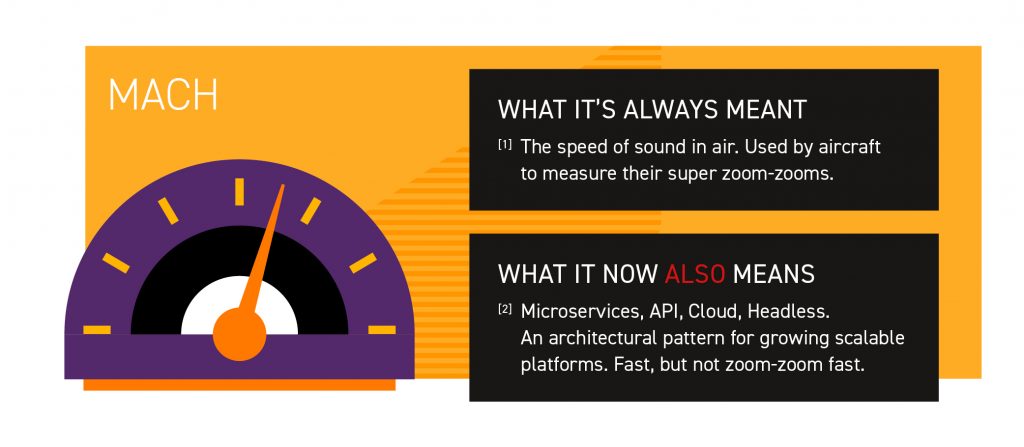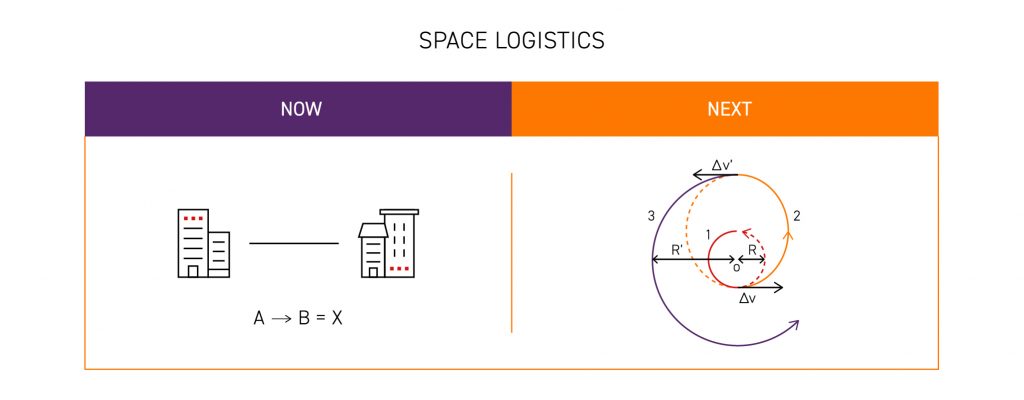25 Years / Digital Transformation Trends Shaping the Future of Industry
A lot can change in 25 years. A lot has changed #Since1997 already. But what about the next 25 years? We’ve all observed that technology is growing at an exponential rate, which means the changes ahead of us surely outweigh those that have already occurred, right?
In fact, there are many digital transformation trends shaping the future of industry – any industry 😉 – many of which we’ve covered in our market predictions for the next 25 years (big flashy link below 😉 ). Here, we want to talk more about the general evolution and future of digital transformation in the broadest strokes.
First 5 Years / Data Everywhere
IT stands for Information Technology (not everyone knows that 😉). We often focus on that last part, but what about information?
Naturally, as more and more processes (and in some cases, entire customer interactions) move online, data will be generated at an unprecedented scale. In 2020, the average person generated 1.7 MB of data per second. More internet usage, more digital devices and more… everything, will only increase this.
Much of that data is going to waste right now – as it often sits in raw, unformatted states – but AI and Machine Learning are definitely growing to meet these needs.
Such solutions find insights beyond human comprehension. Show us a graph comparing two values, fine. 3 values? We can manage. 100 values? Yeah… you’ve lost us.
However, it won’t be a complete walk in the park. GDPR and other regulations are already in place to ensure that such data collection is fair and ethical. This trend won’t change, but there are still countless applications to consider outside of directly identifiable data. Performance values in manufacturing, differences in geographies or even simple A/B testing where it wasn’t previously possible… these are just some of the most immediately impactful digital transformation trends shaping the future of industry today, and tomorrow.
First 5 Years / Architecture Will Break Down to Build Up
Monoliths are a thing of the past. Right now they still exist, sure, but nobody is actively planning to build new ones. A modern monolith is typically seen as a mistake or an accident. The biggest reason for this is because any small change is impossible – you have to redo the entire thing.
Throughout a lot of our predictions, a need for modularity becomes very clear. Whether it’s adding new channels, breaking monoliths to optimize key components or even adapting UI to unique individuals, the ability to make more frequent, smaller changes will outweigh the benefits of large, resource-exhausting replatforming efforts. It’s also very likely that this increase in modular platforms will coincide with the need to analyse data on both large and small scales, as needed.

Of course, for that to happen, companies need to work towards a module, composable framework. Our money is on MACH architecture. It uses the most popular and forward-facing technologies of today, such as API, the Cloud (more on that next!) and microservices, to provide the exact opposite of a monolith.
First 15 Years / Hardware Will Start Phasing Out
Talk to any IT person and sooner or later they’ll probably tell you about the cloud. (We would make a joke about the term itself but we already did that 😉 )

Yet the cloud is still at its core, “just someone else’s computer” but that’s also why it’s so great. The benefits are already there – scalability, the ability to gain more hardware when needed and no need to worry about maintenance. However, there’s also growing ecological concerns that businesses don’t need their own servers. All of this hardware comes at an environmental cost.
And on a personal level, we can wonder if the home computer will still be as important as it is today. Aside from some niche cases, like PC gaming, the typical individual spends their time browsing the internet and storing occasional files. With online tools, a simple browser-based tablet can already do most of that. With IoT on the rise, the traditional home computer may just go the way of all other monoliths.
Between these two things, the multiexperience and omnichannel models will become in essence, the only models. Companies that simply “just have a website” will lose to do those that are more adaptative.

First 15 Years / Hyperpersonalization Will Become Normal
The ability to hone in on someone’s personal preferences is obviously important. Humans have been doing it in conversations since we started talking (probably – we’re old, but not that old). Restaurant staff use it to get better tips, luxury stores use personal assistants to learn customer tastes and… online channels focused on scale first. Their lagging behind, but there’s already been a lot of progress! Personalization as a concept is already here. E-commerce stores love recommendation engines, as they use machine learning models that look to learn your preferences and find the products you are statistically most likely to buy. Multiple sources already confirm it leads to better conversions for marketing, better results for businesses and overall bigger, impactful returns-on-investment.
But that’s just the tip of the iceberg. From marketing to dynamic pages, we can already customize a great deal. In the future of digital transformation, we highly expect this to become the norm.
There are two reasons for this:
- Because we can. Modern technology allows for more sophisticated experiences in the first place. The modularity of MACH (above) and digital experience tools both support this and, surprise surprise, both are being used more and more.
- Because we have access to the information and AI to do so (see data, above). Hyperpersonalization can’t be done manually, so its only through automation – fed with direct data – that this can be achieved.
In the future, the very brand can be adapted to suit individual tastes. For example, we already have design systems, which allow us to easily swap elements in and out. For the sake of accessibility, we could deploy smart models that adapt sizes and colours to help each user get the best experience.

Perhaps in the future, this will even bleed into the real-world, with adaptable billboards or signage that reacts to those closest. Geo-tagging technology already exists, so it’s not such a far stretch of the imagination.
25 Years & Beyond / Logistics Will Be a Lot More Complicated
Up until now, most logistics operations have had a luxury of operating on a 2D plane.
However, at some point in the future this will change. With increased drone usage, 3D logistics and challenges, such as moving around restricted airspaces, will become more common place. But that’s just the start.
Once humankind moves beyond earth, the maths gets a lot more complicated. Current logistics have a lot of constants – for all intents and purposes, address A and address B are X units of distance apart.
In space, it’s much more complicated. Planets, moons and other celestial bodies rotate, so at any given point, we have to calculate the moving distance between two rotating spheres. And that doesn’t even begin to focus on orbits and other factors. For example, is it quicker or cost effective to send a shipment to Mars now, or wait a few weeks until their orbits are much closer?

That’s not any sort of math we want to deal with, but it’s the sort of big-brain thinking that’s going to shape the future of digital transformation sooner or later.
Digital Transformation is the Future
If we have to end on one final note, it’s that innovation is a case of when not if. To think nothing will change is to be caught off-guard when it inevitably does. The best way to not be caught out is to be aware of current trends, open to new ideas and willing to look forwards, not backwards.








